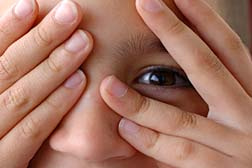Mattel initiated the recall, and it's far and away the largest single recall in the toy company's long history. It has also prompted an admission from Mattel executives that they have been looking at the possibility of doing more production from company-owned and controlled plants, rather than sub-contracting work out to other facilities in China.
"We do realize the need for increased vigilance, increased surveillance," said Jim Walter, senior vice president of worldwide quality assurance at Mattel, in remarks published today in the New York Times.
 "This latest action is two-fold, in that it involves the recall of 436,000 die-cast toy cars in the guise of 'Sarge,' the character from the animated 'Cars' movie. Lead-based paint was used on the painted surfaces of the toy.
"This latest action is two-fold, in that it involves the recall of 436,000 die-cast toy cars in the guise of 'Sarge,' the character from the animated 'Cars' movie. Lead-based paint was used on the painted surfaces of the toy.A parallel recall involves a staggering 18.2 million magnetized toys. While these toys were also made in China, Mattel admits that they were manufactured according to Mattel-issued design specs. There is concern that the powerful magnets used in the toys would be harmful to a child if swallowed. The toys have been produced since 2002 and sold prior to the start of the New Year, 2007. The recalled magnetized toys include 44 versions of the Polly Pocket toys, 11 Doggie Day Care toys, 4 Batman toys, a One Piece toy, and 2 Barbie toys.
Mattel was quick to say that the latter recall was on its own head, and not due to negligence or error on the part of their China-based subcontractors and manufacturing partners.
In a related statement, industry analysts are saying that the made-in-China quality issue aside, this latest recall is indicative of a much larger problem in the toy industry, as manufacturers are coming to terms with the realities of safety versus long-held beliefs and assumptions. If Mattel, one of the truly major players in the toy industry, is experiencing these kinds of problems, analysts say, one might shudder at what could be falling through the cracks with some of the smaller manufacturers.
To that end, Mattel conducts regular testing of its products - protocol that uncovered the lead paint in the die cast 'Sarge' toy car. The subcontractor in China, Hong Li Da, was brought on board by one of Mattel's contractors there, Early Light Industrial. The latter has been involved with Mattel for some two decades, and is one of as many as fifty contractors in China that Mattel uses—Mattel routinely sub-contracts the production of some toy parts to other companies.
It is Hong Li Da that bears the blame for the lead paint found on this latest block of recalled toys.
Another Chinese contractor, Ler Dee Industrial, was responsible for the production of toxic toys painted with lead paint and pulled from the market in a prior recall. Mattel immediately stopped doing business with Ler Dee Industrial, and just recently the Chinese government revoked the contractor's licence.
Still, it represents the tip of an iceberg, in that the majority of Mattel toys - 65 per cent - are made in China. Some toys are produced in facilities owned and run by Mattel in China, but the remainder are contracted and sub-contracted out, making for a tangled weave of players that can be involved in the production of the toy that your child is about to put in his mouth.
Industry critics are calling for Congress to extend more cash and clout to the Consumer Product Safety Commission (CPSC) in an effort to better regulate the industry. For its part, the CPSC is in negotiations with the toy industry, with an eye to broaden the parameters of routine testing - something that Mattel does on a regular basis. The company has been actively investigating its toys since a previous recall of toys found with lead-based paint was announced in July.
Curiously, the CPSC is taking the high road and asking Americans not to read too much into this latest recall. In remarks published today in the New York Times, acting Commission Chairperson Nancy A. Nord stressed that yesterday's recall is not the largest experienced by the CPSC, and given the hundreds of millions of toys vended in the U.S. each year, this recall should be kept in proper perspective.
And yet, this latest recall comes at a sensitive time for the toy industry, as it prepares to ramp up shipping for the Christmas season.
READ MORE LEGAL NEWS
S. Prakash Sethi, a professor with Baruch College at the City University of New York, has monitored the working conditions at Mattel factories for the past decade. He makes the point in the New York Times that given the emphasis on quality and routine testing at Mattel, there is bound to be trouble with the products of other manufacturers of toys, apparel, or even with the low-end electronics industries. "Everyone is going to be found with dirty laundry."However, Professor Sethi continues, "there is something to be said about the pressure that American and European and multinational companies put on Chinese companies to supply cheap products. The operating margins are razor thin," Professor Sethi tells the New York Times, "so you really should not be surprised that there is pressure to cut corners."
"No system is perfect," Robert A. Eckert, Mattel's chairman and chief executive, said in a conference call at the time the massive recall was announced yesterday.
"There's no guarantee that we will not be here again."




